Planting bulbs in autumn is one great way to prepare for the growing season ahead, and it gives you something to look forward to in your spring garden. But if spring arrives and your bulbs haven’t sprouted, you may be dealing with bulb-eating pests that have eaten up all of your crocus, tulips, and other flowering bulbs. While this is certainly a headache, it can also cost you money; however, there are certain steps that you can take to prevent animals from eating your flowering bulbs over the winter!
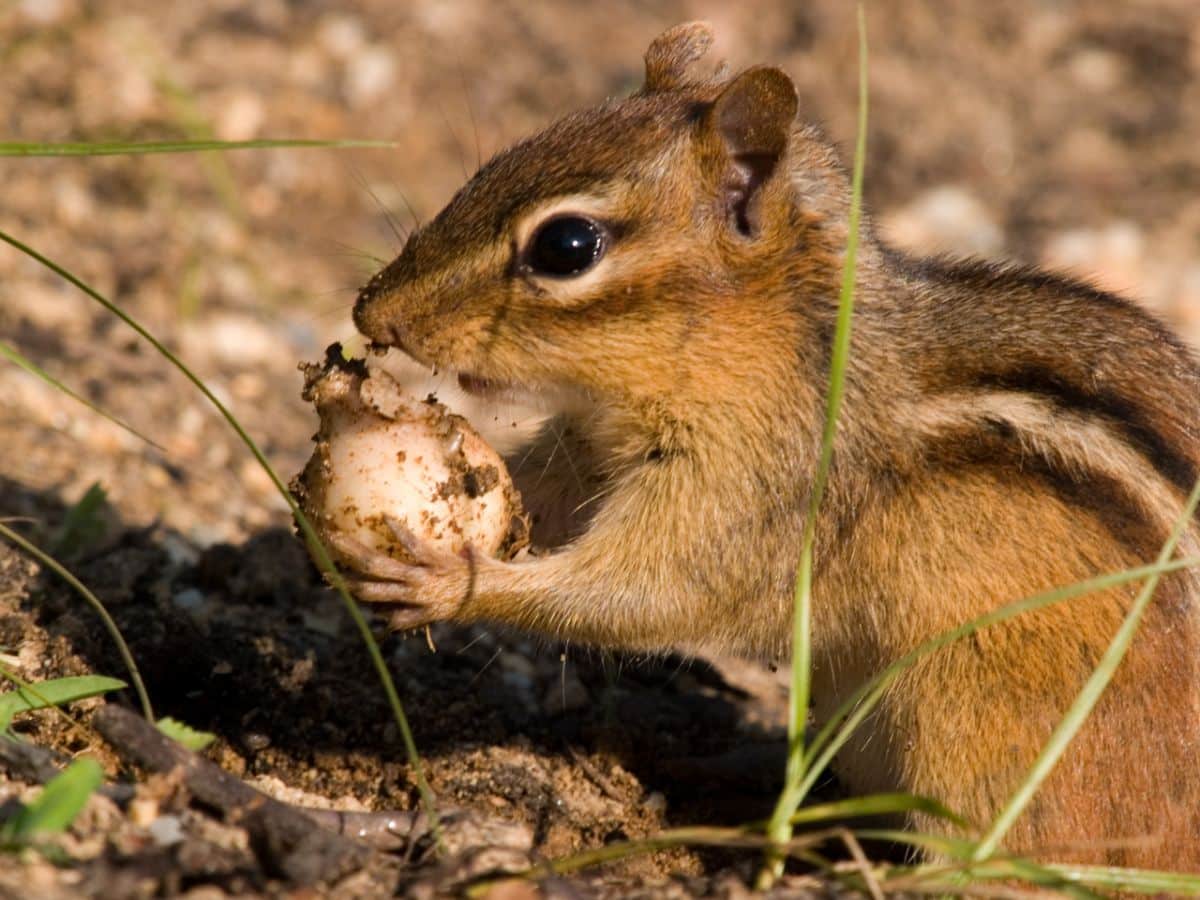
In this guide, we’ll cover a number of all-natural and safe ways that you can deter wildlife, shield ornamental bulbs, and protect your garden investment. From learning how to plant bulbs correctly to employing natural deterrents like bulb cages and predator sprays, you’ll discover everything you need to keep rodents and other bulb eaters at bay and grow a healthy and plentiful harvest of colorful bulbs in spring!
Jump to:
- What types of pests eat flower bulbs?
- 12 tips to prevent animals from eating your flowering bulbs
- 1. Plant at the right depth
- 2. Use bulb cages
- 3. Try companion planting
- 4. Plant pest-proof bulbs
- 5. Deter digging with gravel
- 6. Avoid smelly soil amendments
- 7. Experiment with hardware cloth
- 8. Use decoys
- 9. Apply mulch
- 10. Spray repellents
- 11. Remember to tidy up
- 12. Provide other food resources
- Frequently asked questions
- Summary
What types of pests eat flower bulbs?
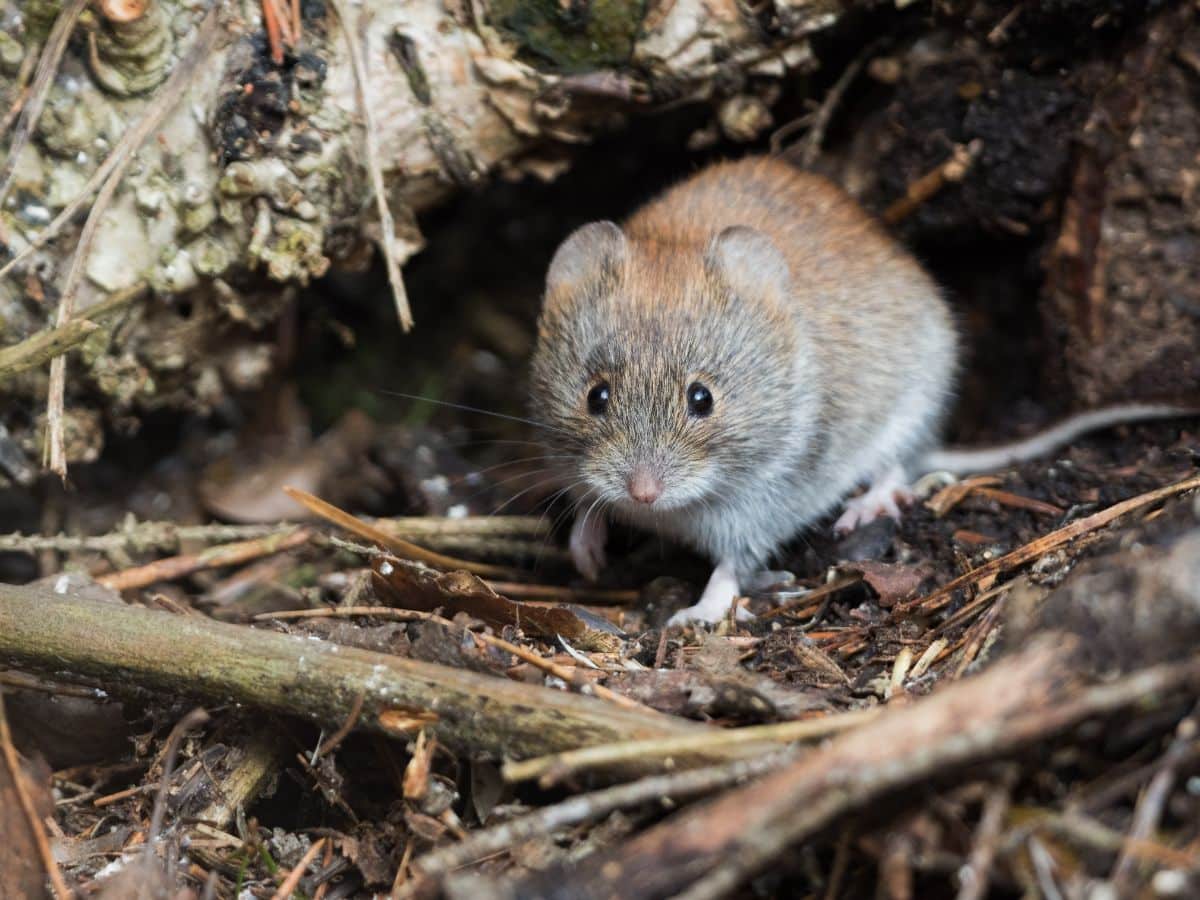
Many different animals and insects will eat flower bulbs, but animals can be particularly destructive because they will often gobble up the entire bulb! If you’ve planted a lot of bulbs year after year in autumn, but they don’t seem to be coming up, you may be dealing with a pest issue!
What animals are eating your bulbs will vary depending on where you live, but some of the most common bulb-eating culprits include:
- Voles
- Mice
- Chipmunks
- Squirrels
- Gophers
- Groundhogs
Rabbits and deer may also target bulbs, but they usually stick to plant leaves, and they tend to be more problematic when plants are in bloom. That said, if food is scarce in your garden, deer and rabbits may also uproot flowering bulbs and devour them whole!
12 tips to prevent animals from eating your flowering bulbs

Sometimes, you’ll actually see wildlife in the process of digging up your bulbs, but more often, you’ll find the damage they leave behind. Wildlife can eat bulb leaves, but they’ll also dig up entire bulbs and leave your flower beds barren. If you see digging activity in your garden or you know that you have a large population of rodents in your area, you may want to take preventative steps to protect your bulbs before problems arise.
1. Plant at the right depth
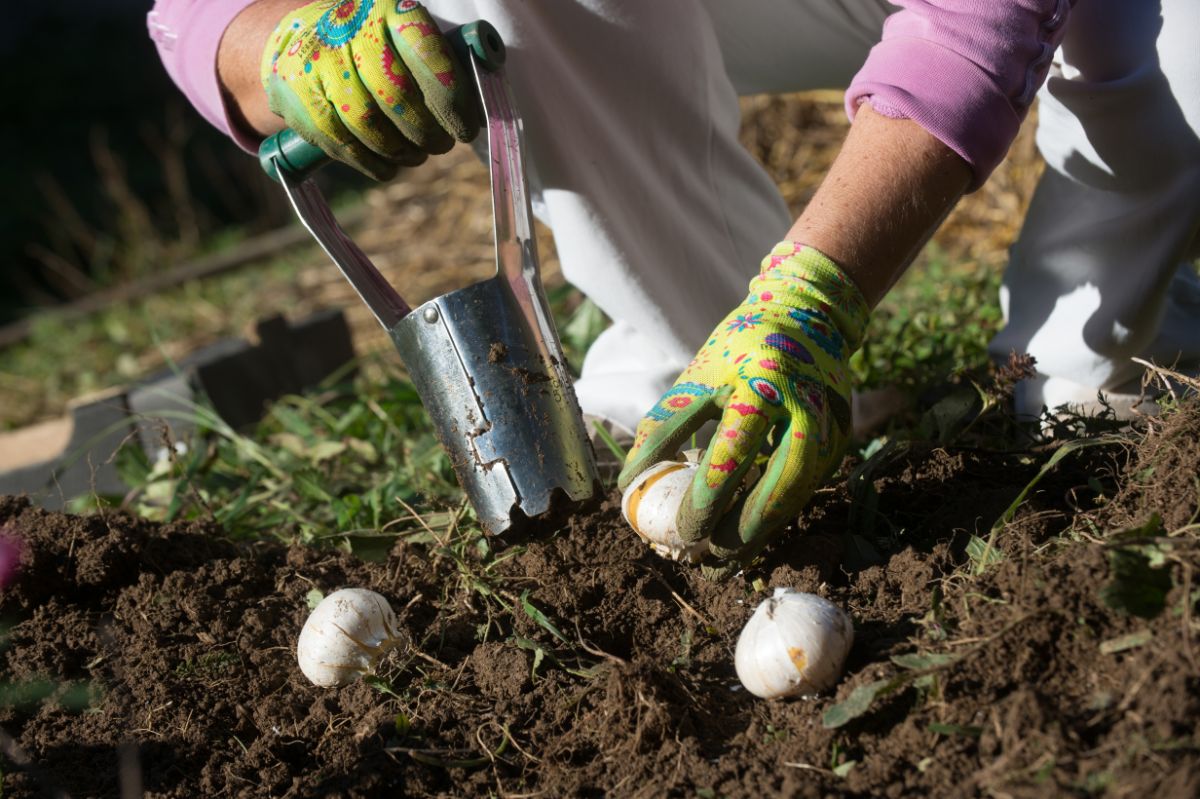
Anything that makes it tougher for critters to dig up your bulbs will help protect your plants and ensure they overwinter well. And one of the best ways to keep rodents and other animals from finding your bulbs is planting bulbs at the correct planting depth.
While it’s certainly easier to plant bulbs near the soil’s surface, planting bulbs in shallow holes makes them easier to dig up, and it also exposes bulbs to colder temperatures. If your bulbs came with planting instructions, be sure to follow the recommended planting depths when sowing your bulbs in autumn. Otherwise, a good rule of thumb is to plant bulbs at a depth that is 2 to 3 times as deep as the height of the bulb.
Planting a lot of bulbs all at once can be a chore, and it’s hard on your back, too. To speed things up, you may want to invest in a bulb planter or an auger drill bit that will work with your hand drill!
2. Use bulb cages
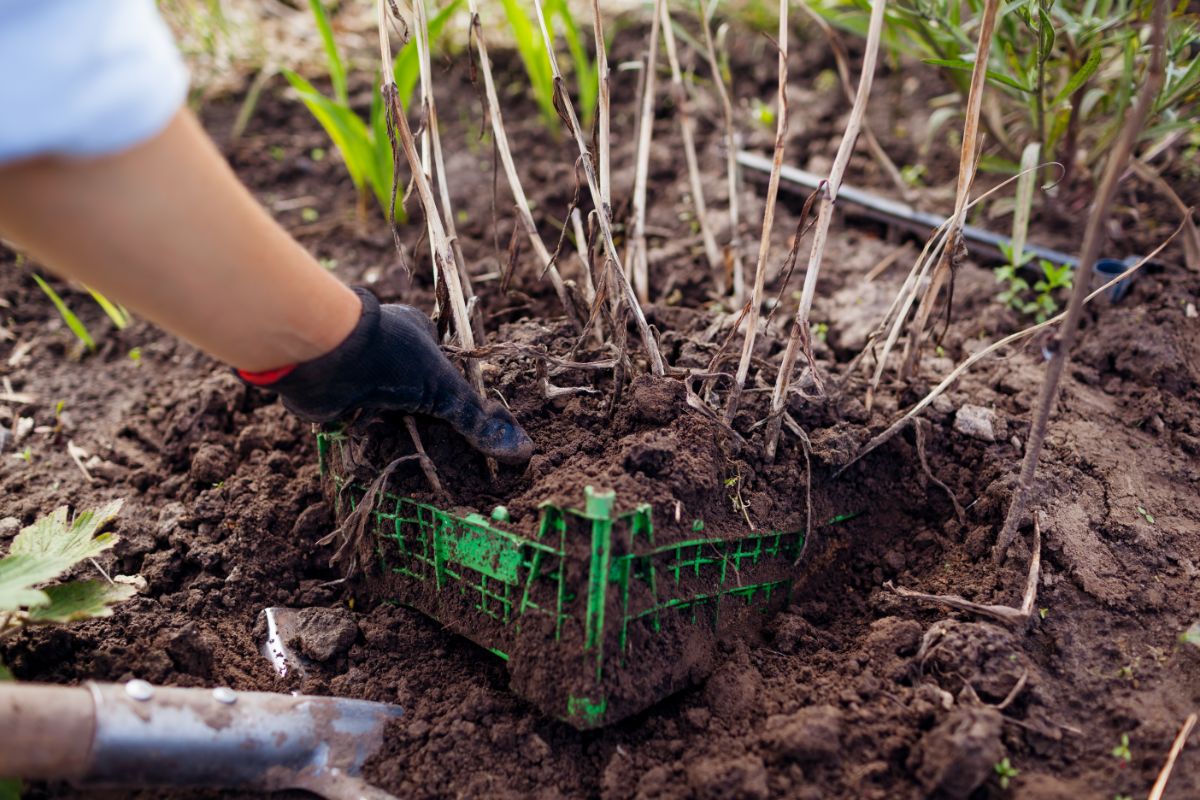
Bulb cages are handy little contraptions that can be planted right along with your tulip, lily, and other bulbs, and your bulbs can sprout right through the gaps in the cages. But while the cages will allow your plants to grow, they’re made of sturdy stuff that keeps rodents and other pests from gobbling up your flowering bulbs. Even better, if you happen to grow plants like dahlias that need to be dug up in autumn and overwintered in a protected space, bulb cages can make it much easier to find and excavate your plants!
Bulb cages and baskets can be purchased at garden centers, or you can order them online. Another option is to make your own bulb cages out of scrap chicken wire or hardware cloth. Simply mold the wire into a rounded shape that’s large enough to fit your bulbs, but be sure to wear sturdy gloves as you work because hardware cloth wires are sharp!
3. Try companion planting

Companion planting is an organic gardening technique in which certain plants are grown together to benefit each other. Sometimes, companion plants can accelerate the growth of their neighbors or improve the flavor of nearby vegetables. However, most gardeners utilize companion planting for natural pest control.
Companion plants are usually employed to deter insect pests, but some plants are also known deterrent for digging rodents, like chipmunks and voles. Interplanting companion plants like alliums in your bulb beds may keep pests away and help your bulbs make it through the winter. Aside from alliums, castor bean plants, mint, and salvia are deterrents for many rodents, and many pests will also avoid marigolds, sedum, and strongly scented herbs like lavender.
4. Plant pest-proof bulbs

Some bulbs are more appealing to garden pests than others, so if you know that rodents are afoot in your garden, you may want to stick to bulbs that are naturally pest-resistant. Chipmunks, voles, and other bulb eaters typically target bulbs like lilies, tulips, and crocuses, but these pests may find other bulbs less attractive. Some of the most popular bulbs that are known to be unappetizing to most wildlife include:
- Alliums
- Winter aconite
- Hyacinth
- Siberian squill
- Daffodils
- Camassia
- Grape hyacinth
- Snowdrops
- Fritillaria
While the above bulbs are known to be pest-resistant, if food is very scarce in your garden, wildlife may still pester some of these bulb species. So, to be extra safe, you may want to follow some of the other measures listed in this guide to protect your bulbs and safeguard your beds.
5. Deter digging with gravel
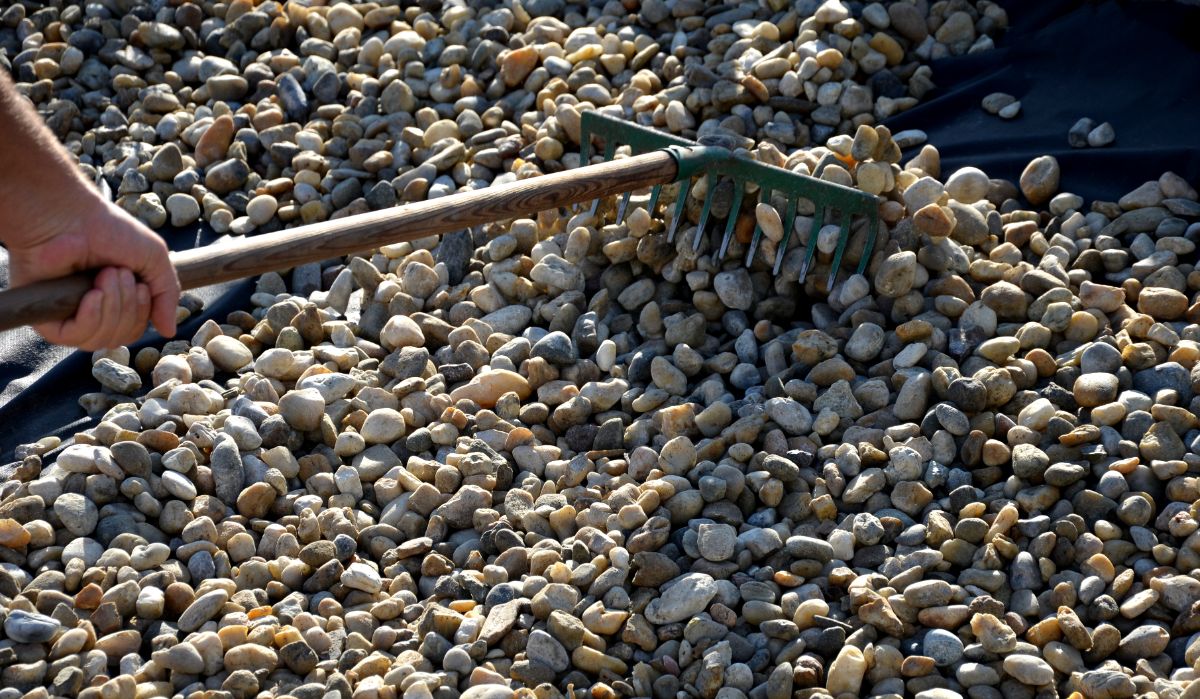
Anything that makes it difficult for wildlife to dig up your bulbs will help to shield your ornamentals and ensure your bulbs make it through the winter. There are several different ways to deter digging in your beds, but adding a layer of gravel into your planting holes or over your garden soil may be a good solution.
If you don’t mind the look of gravel in your beds, you can use gravel as a mulch in your gardens. When pests encounter this tough-as-nails mulch alternative, they often won’t even try to dig through it. But if you don’t like the look of gravel, you can also bury gravel right along with your bulbs!
To use gravel in bulb planting holes, simply lay down a thin layer of sharp stones at the bottom of your bulb holes when planting and then cover up the gravel with a light layer of soil. Next, place your bulb in the hole, add a bit more soil and then a bit more gravel, and then finish the hole off with a final layer of soil. Planted in this manner, you won’t be able to see the gravel at all, but voles and other burrowing pests will generally turn around when they encounter a sharp layer of gravel and leave your bulbs alone.
Of course, if you go this route and add extra material to your bulb holes, you will need to dig your holes a bit deeper to make sure your bulbs are still sown at the correct planting depth.
6. Avoid smelly soil amendments
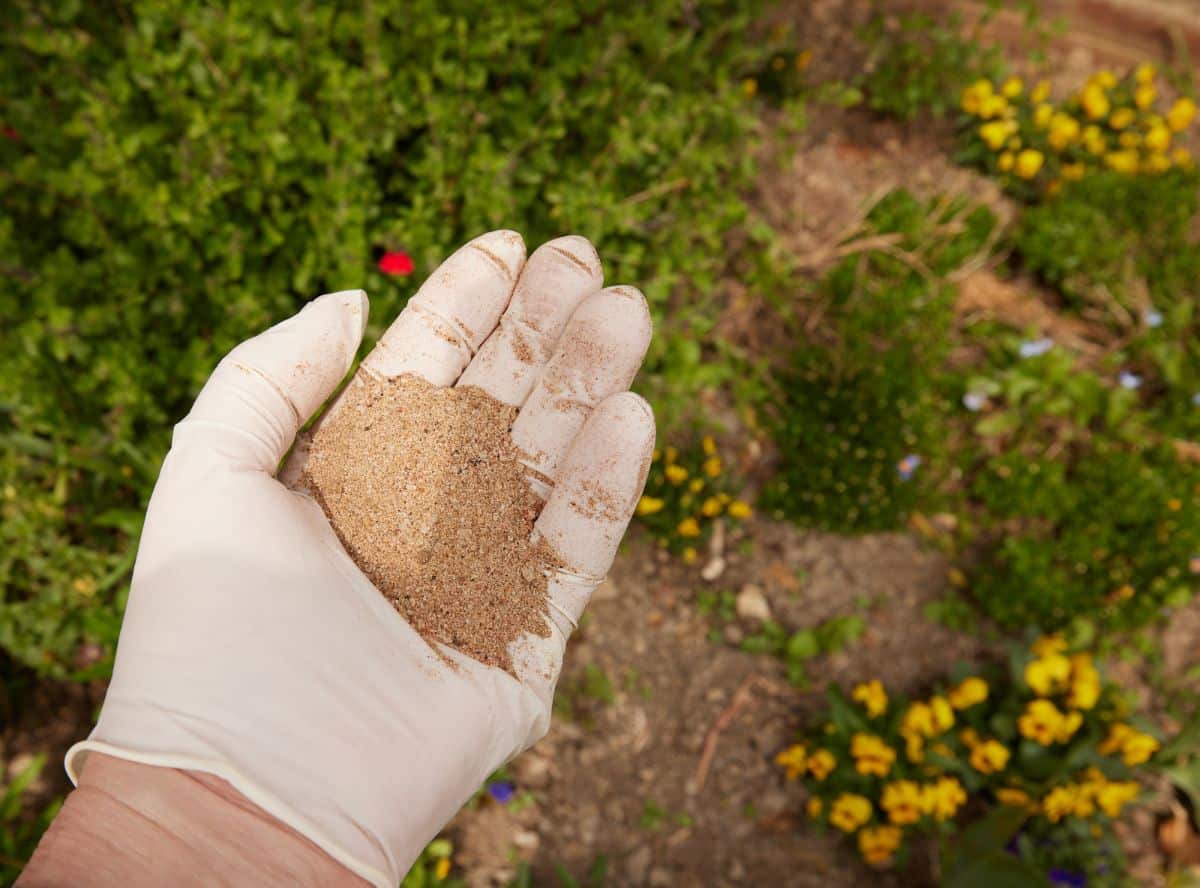
Bone meal, blood meal, and fish meal offer a lot of benefits to plants, and bone meal, in particular, is often added to bulb holes at planting time. But if you have pests in your garden, you may want to skip out on these soil amendments entirely.
While bone meal and other soil additives may not smell like much to you, the highly developed noses of animals can often catch the scent of these products even when they’re under the soil line. Amending your soil with aged compost may be a better option as it’s less likely to attract vermin. You can also skip feeding your bulbs in autumn and wait until your bulbs sprout in spring to apply fertilizers.
7. Experiment with hardware cloth
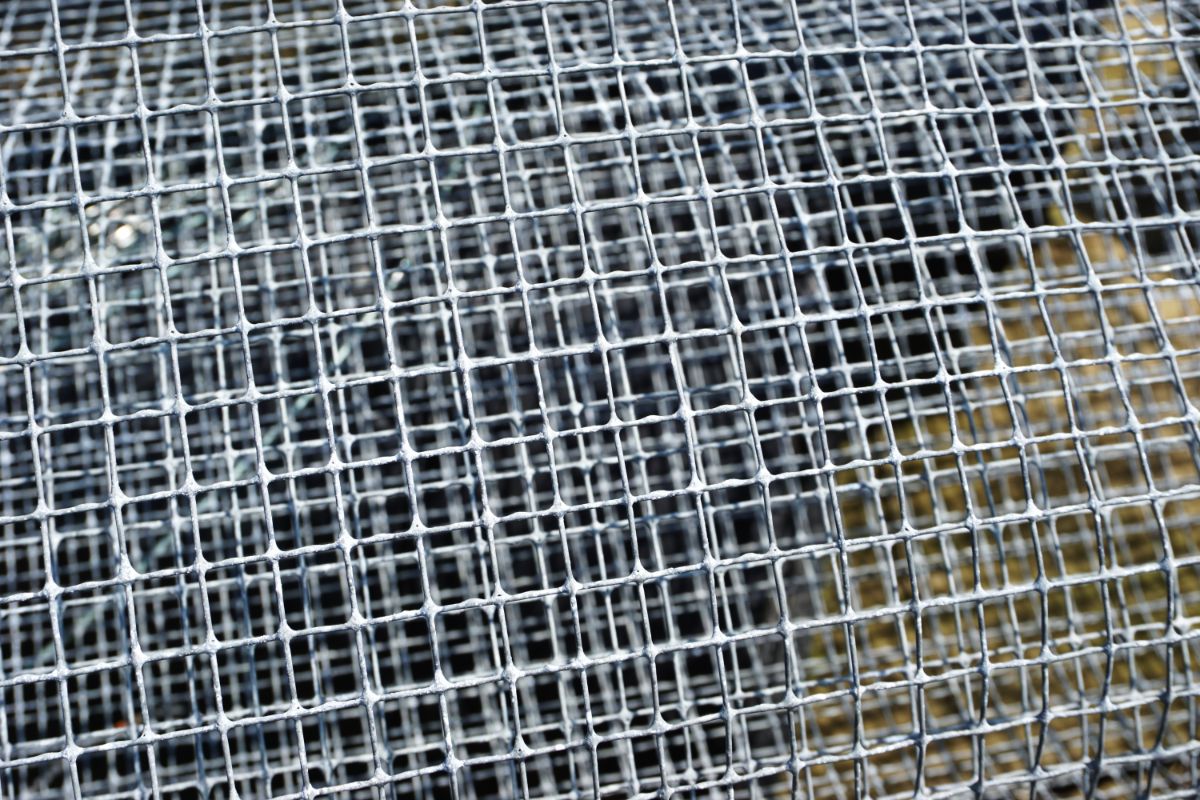
Gravel is one way to deter animals from digging up your bulbs. But if you don’t like the thought of adding stones to your garden beds, there is another option: hardware cloth.
Hardware cloth and chicken wire are commonly used in livestock housing, but they can also be added to garden beds to keep pests from digging up your bulbs. You can use these products to make small DIY bulb cages, or you can line the bottom of raised beds with a sheet of hardware cloth to keep voles from digging up your garden.
If you don’t have raised beds and you grow bulbs directly in your soil, try adding a sheet of hardware cloth beneath where you intend to sow bulbs and then cover your soil line with another layer of hardware cloth. Slender bulb stems shouldn’t have any trouble poking through hardware cloth, but digging pests will usually be thwarted. After installing your hardware cloth, add a layer of mulch to your bed to add extra protection for your bulbs and conceal any remaining hardware cloth.
8. Use decoys
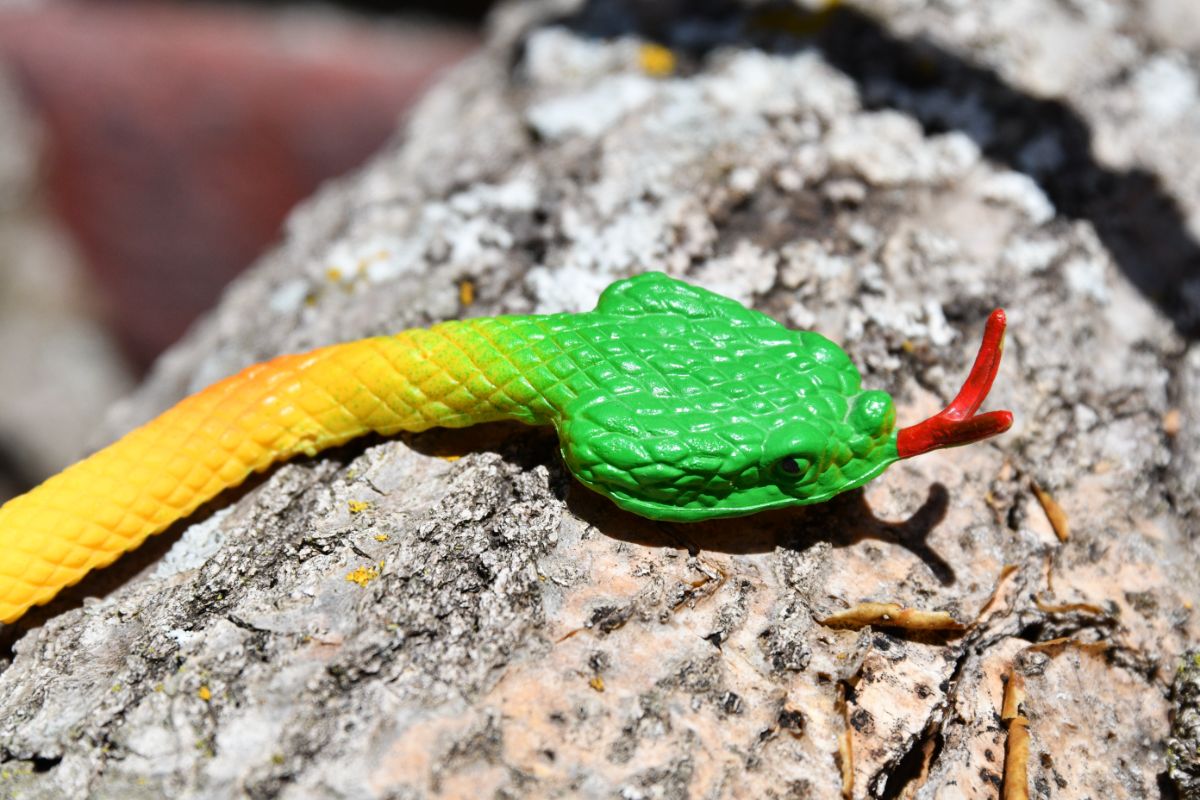
Chipmunks and other rodents are prey animals that are always on the lookout for potential predators. So, one easy way to keep rodents away from your bulbs is to use decoys.
It may sound silly, but items like rubbers snakes placed strategically throughout your bulb beds can actually do a lot to deter rodent activity. You can also install a motion-activated owl decoy near your garden, or you can string old CDs on a cord or hang up metal streamers to keep pests away. While decoys aren’t 100% effective, they can be a useful addition to your gardening arsenal, and they work well when combined with some of the other pest control measures on this list.
If you notice that rodents avoid your decoys at first, but then the decoys seem less and less effective, try moving your decoys around in your garden. Sometimes, pests will get used to seeing decoys in a particular place, but relocating your decoys every few days can make them feel new and increase their deterrent effect.
9. Apply mulch

Gravel can function as a mulch, and its sharp edges will deter digging animals. But even standard wood and bark mulches can make digging more difficult for critters and help to protect your bulbs as well.
Wood and bark mulches add color to your garden, and they make flower beds look more finished. However, these products will also shield your soil from the elements, protect bulbs and plant roots from the worst of winter weather, and they may help combat garden pests, too!
To get the most benefits out of your mulch, apply it in autumn after sowing your flower bulbs and apply the mulch in a thick 1 to 3” layer. Heavy mulches, like wood, tend to be the best for deterring digging, while thick layers of lightweight mulches, such as pine needles and autumn leaves, may actually provide shelter for burrowing animals. If you want to boost the effectiveness of your mulch even more, lay down a layer of hardware cloth before spreading out your mulch!
10. Spray repellents

Today, there are many different repellant sprays that can be useful for deterring wildlife, but these products usually need to be applied regularly to keep them effective. Sprays made of predator urine, garlic oil, or peppermint oil can be particularly useful against digging animals, and they are generally applied with a standard garden sprayer. How often you’ll need to apply these sprays will depend on the product you’re using and your local weather, but deterrent sprays usually need to be applied about once a week and after heavy rain.
If the thought of using repellent sprays doesn’t appeal to you, try out companion planting with allium plants, such as garlic, chives, or ornamental alliums. You can also experiment with other deterrent items, like spent coffee grounds, citrus peels, and cinnamon.
11. Remember to tidy up
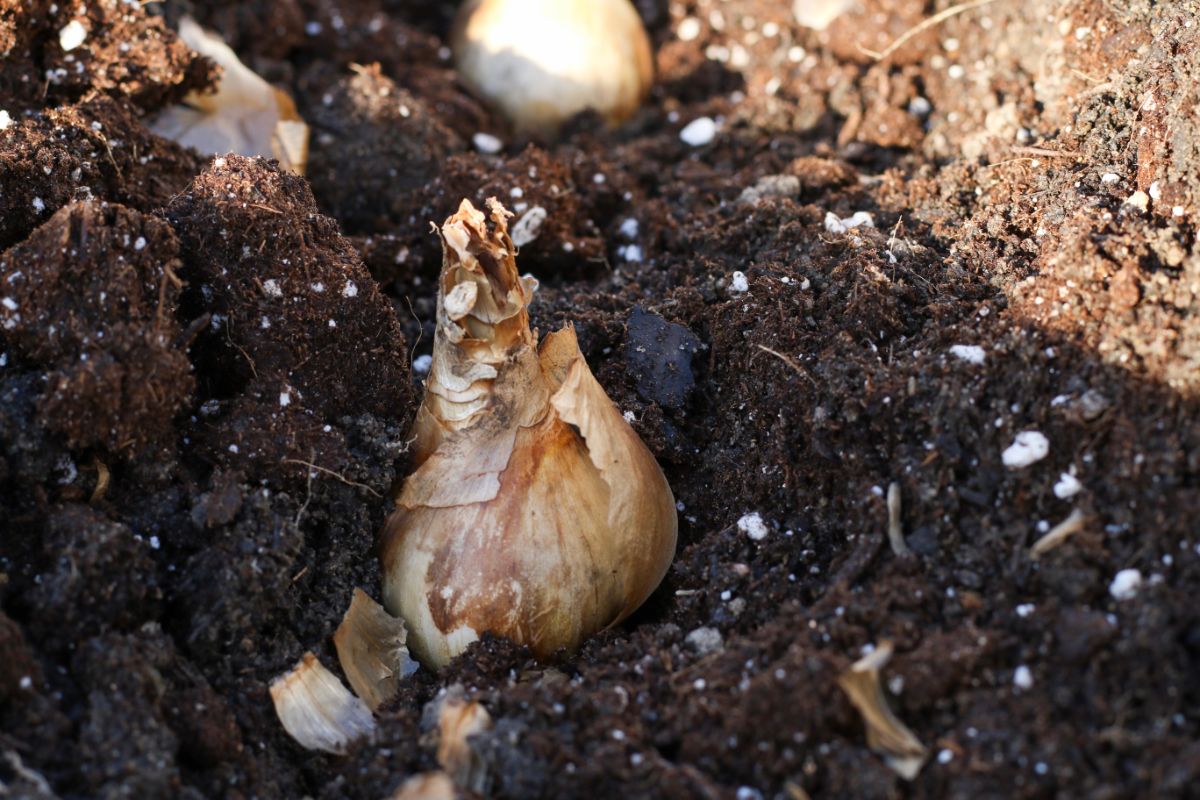
Bulbs normally have a papery skin, which should be planted along with the bulb. However, it’s very common for bulb skins to fall off the bulbs during handling or shipping, and it’s common practice to simply dump the shed papery skins on the ground when you’re planting bulbs.
But if you leave bulb skins near your bulb planting holes, the skins can actually attract pests and tell them where to dig for bulbs. Cleaning up any old skins or other debris after bulb planting and smoothing the soil line will make your bulbs harder to find and deter digging animals too. If you happen to use fertilizers or other amendments when planting, make sure you clean those up as well before you pack up your garden tools for the season!
12. Provide other food resources

A healthy garden is a living ecosystem full of plants, insects, and other animals. While bulb-eating pests can be a headache, it’s important to remember that they have their place in nature just like we do, and when they destroy ornamental bulbs, it’s just because they’re foraging for food. That’s why one of the best ways to protect your bulbs from wildlife is to provide other food resources.
Hanging up a bird feeder or squirrel feeder filled with peanuts can tempt chipmunks and squirrels away from your bulbs and help protect your plants. Suet feeders and sprays of millet hung on your porch can also be effective, and they have ornamental appeal. When installing your feeding station, locate it at a distance from your garden beds to lure animals away from your bulb plantings.
If you prefer a more natural aesthetic, try planting winter interest plants that retain seeds or berries through the winter months. Wildlife will often feed on these plants and be too full to bother with your bulbs! Some popular plants to grow for winter wildlife include amaranth, black-eyed Susan, coneflowers, winterberry, and crabapples.
Frequently asked questions
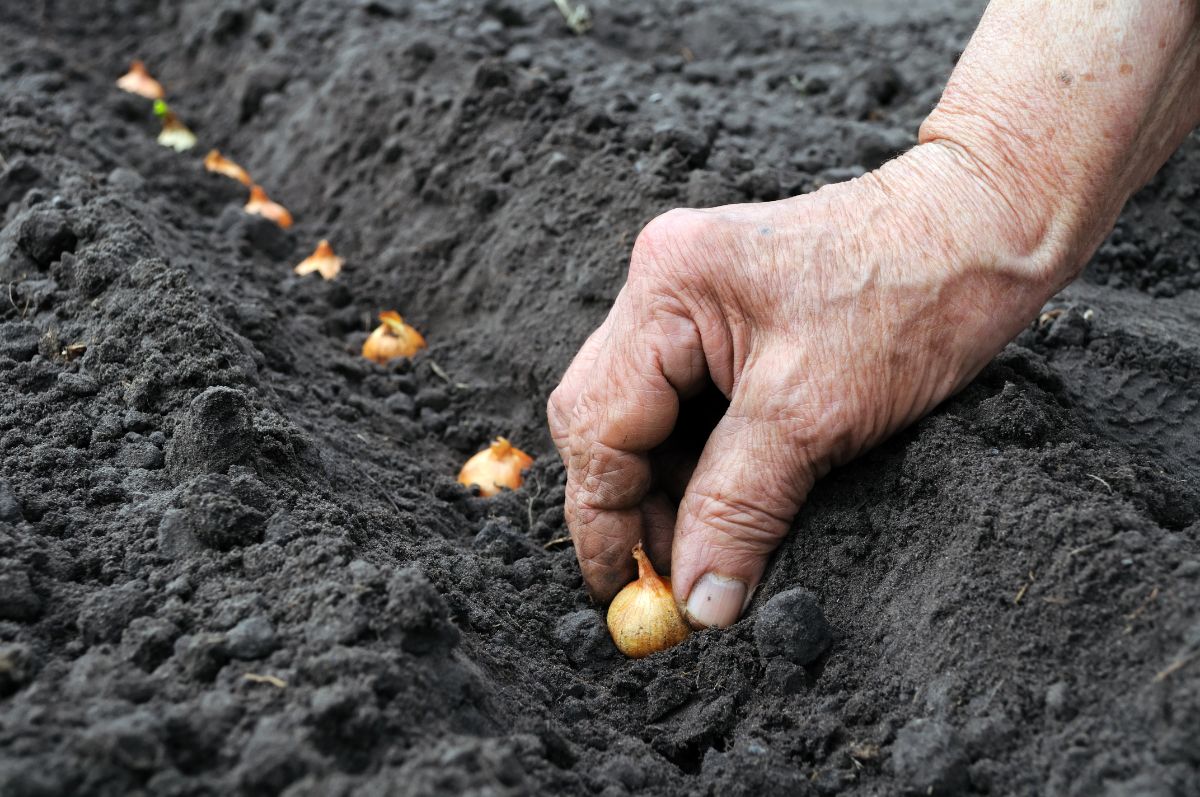
Coffee grounds may help deter moles and voles, although this gardening tip needs to be studied more thoroughly. Currently, there is no scientific evidence to support using coffee grounds as a rodent deterrent, but many gardeners rave that this DIY hack works!
Products containing castor oil have been used as a mole and vole deterrent for years as these burrowing animals are known to detest the scent! Strongly scented herbs, like garlic, chives, and peppermint, are also repulsive to moles and voles, as are products containing capsaicin (the ingredient that makes hot peppers hot!) Depending on your gardening size and style, you can try companion planting with herbs like chives, or you can use a spray-on product like Garlic Barrier to keep these pests away from your garden beds.
Like many other pests, groundhogs give many fragrant herbs a wide berth in the garden, and growing aromatic herbs near your bulb beds may help to protect your bulbs. Some plants that may keep groundhogs away include alliums, sage, thyme, oregano, and mint.
Chipmunks also tend to avoid strongly scented herbs and castor oil, but they can also be frightened off by predator urine sprays. Spray products containing garlic oil, peppermint oil, castor oil, or putrescent egg solids can also deter chipmunk activity.
The best way to keep deer from browsing in your garden is to install fencing that’s at least 8’ tall. That said, fencing isn’t always a viable option for some gardeners, so you may want to try out repellent sprays with predator urine or garlic oil. Deer also tend to avoid strongly scented plants or plants with fuzzy stems, such as Russian sage and lamb’s ear.
Rabbits are less likely to dig up bulbs than some other garden pests, but rabbits will sometimes target both bulb leaves and roots, especially when other food resources are scarce. You can keep rabbits away from your bulbs with predator urine sprays or by using products that contain peppermint oil. Companion planting with alliums, marigolds, or mint can also be effective.
Summary
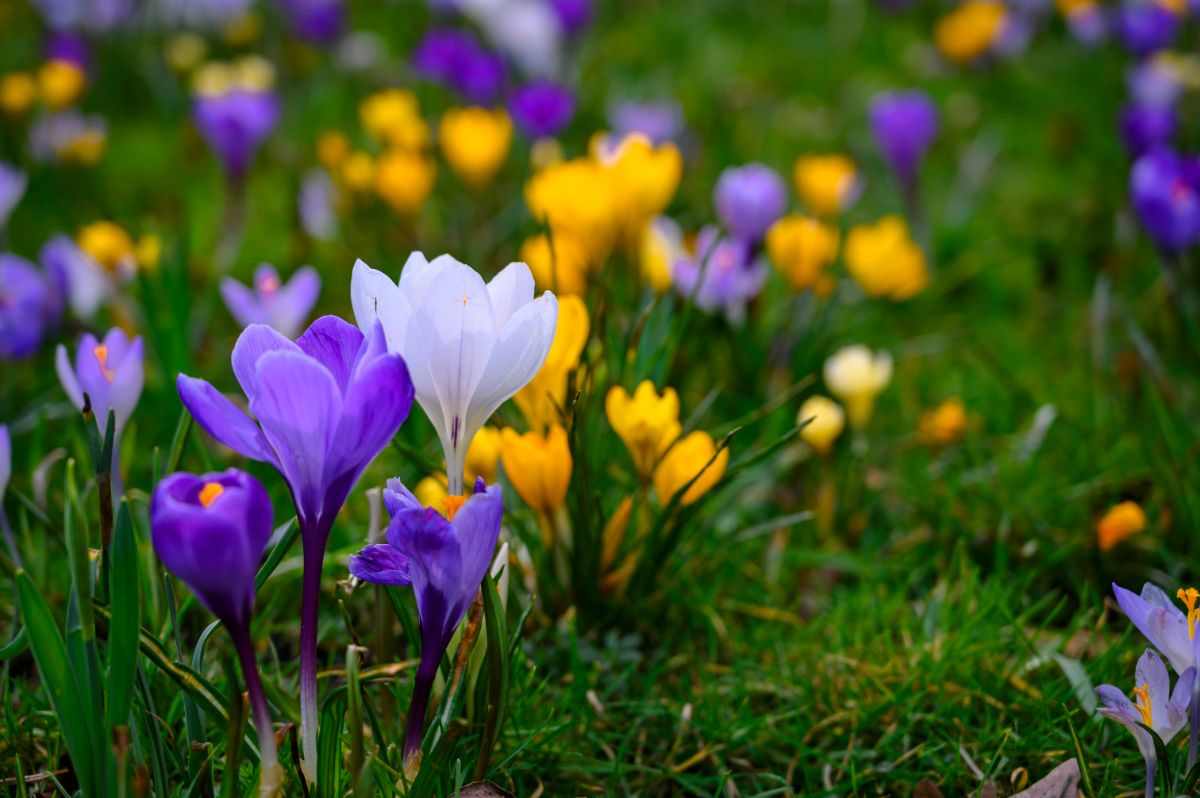
After doing all the hard work of bulb planting, no gardener wants to find that their tulips and lilies have all been eaten up before spring arrives! Deterring burrowing and digging garden pests is an important part of growing ornamental bulbs, but protecting your bulbing plants isn’t as tricky as you may think.
When food is scarce during winter, animals are more likely to dig up bulbs, but you can prevent this by providing alternate food sources for wildlife, such as winter berries and squirrel feeders. Bulb cages, hardware cloth barriers, and deterrent sprays are also easy to use, and they can make a big impact in bulb beds. However, if you want to ensure your bulbs make it through the winter months, use as many of the techniques we’ve covered today as these pest prevention methods work even better together!
We hope this article was useful, but if you’d like to learn more about keeping wildlife out of your flower beds, you may also enjoy our guides on how to prevent voles and how to protect garden beds from foraging deer. And for more bulb planting suggestions, check out our guides on spring ephemerals and the best bulbs to plant in autumn.


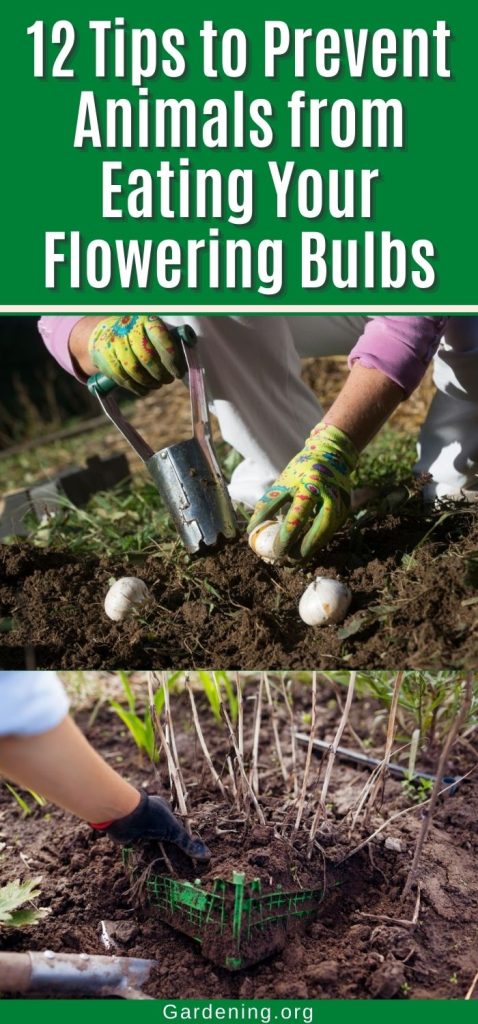
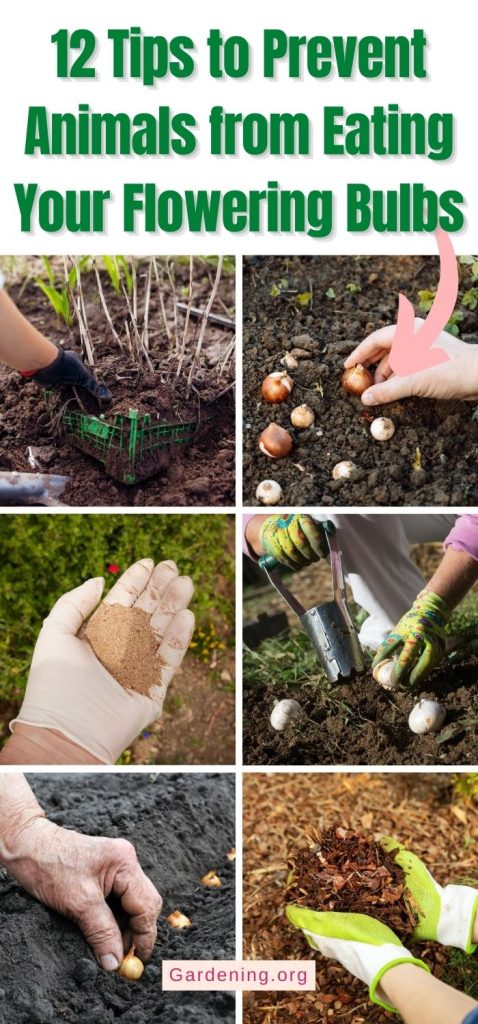
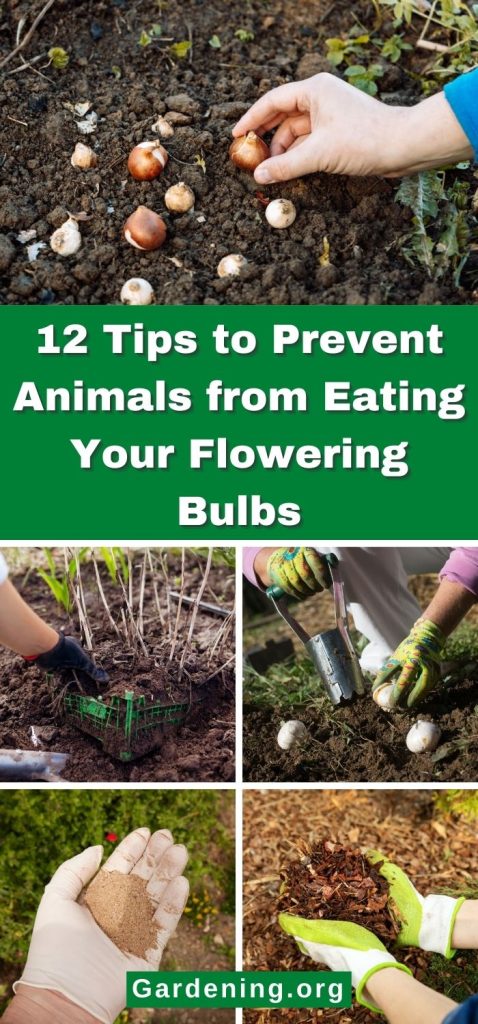




Leave a Reply